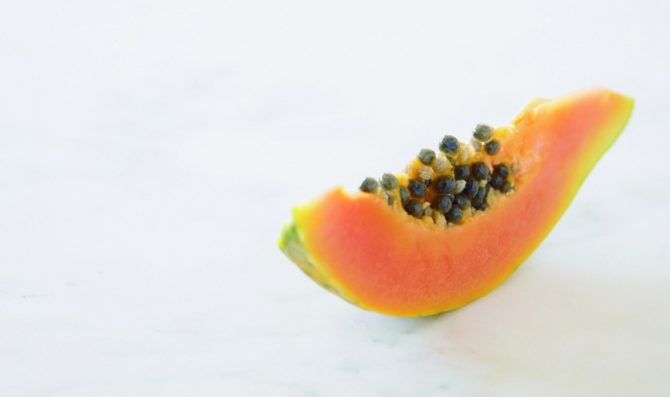Desserts: French Fruit Preparation

We’re utterly spoilt for choice when it comes to the variety of textures, aromas and flavours of these natural goodies. Think for a moment about tangy summer berries, or a perfect honeyed peach, dripping with golden juices. Or soft, earthy figs, sun-warmed and sticky, eaten fresh from the tree. Perhaps you prefer the crisp sharpness of an early autumn apple, or that quintessential winter fruit, the quince, poached to a gorgeous ruby-red, until it fills the house with its subtle perfume.
The natural sugars and acids in fruit make them the ideal light finish to any meal. If you are lucky enough to find fruit at the height of the season and in peak condition then it’s hard to beat fresh fruit, eaten as is, with no fiddling about. But this perfection and ripeness can be tricky to find and I often find that a little tweaking is needed to bring out the true intensity of flavour. Dust a less-than-ripe peach with a little icing sugar and gently bake it until tender and juicy. Or poach those hard little apricots in a syrup flavoured with cinnamon, vanilla or a touch of lime zest.
Poaching, Baking & More…
Two of the simplest, and most effective, ways to prepare fruit are to toss it gently in a light stock syrup or macerate it in a little alcohol. Both are quick and easy ways of infusing the fruit with complementary flavours and intensifying and releasing the natural juices.
Fruit needs little cooking – a gentle poaching or brief baking is usually all that’s needed to soften it to tender juiciness. And once cooked, fruit has many more uses – smooth purées make a natural sweet sauce on their own or folded into creams or custards, and they can be used to flavour jellies, mousses, soufflés, sorbets or ice creams.
Chunkier compotes can be baked under a sponge, pastry or crumble topping. Take the process a step further, and you can roast fruit to a caramelised goodness or dip wafer-thin slices in syrup and dry them in the oven to make an elegant crisp garnish.
Dried or Fresh
Good-quality purchased dried fruits or those you’ve prepared yourself are similarly versatile and they are a delicious way of varying the range of available fruits during the winter months. Many dried fruits, such as muscatel grapes, tangy apricots or even toffeeish dates, make a wonderful addition to a cheese plate. Most dried fruits also respond particularly well to being macerated in an alcohol-infused syrup, or poached back to softness in a flavoured syrup.
When it comes to selecting and storing fruits, buy from farmers’ markets or quality greengrocers wherever possible. Only buy fruit that is in season, and choose fruit that is perfumed and blemish-free. Many fruits continue to soften and ripen after they’ve been picked, so they don’t have to be stored in the refrigerator, unless you enjoy eating them chilled.
As far as preparing fruit goes, often it will be need to be washed or peeled, and some fruits have stones, seeds, pips or cores that need to removed. Generally speaking, though, the fruit itself will only need to be neatly sliced or chopped before cooking or serving.
Excerpt from Justin North’s French Lessons: Recipes and techniques for a new generation of cooks. Published by Hardie Books, 2013. Justin North began his career in his native New Zealand before traveling to England where he worked with renowned chef Raymond Blanc. After three successful years honing his skills abroad, he returned to Australia where he cooked with Liam Tomlin at the much-missed Sydney restaurant Banc. In 2001, North opened his own restaurant, Bécasse, and it was met with instant critical and public acclaim. North is also the author of Bécasse.
From France Today Magazine
Share to: Facebook Twitter LinkedIn Email
Leave a reply
Your email address will not be published. Required fields are marked *



